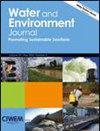结合生态需求和稳定性要求优化水库运行
IF 1.8
4区 环境科学与生态学
Q4 ENVIRONMENTAL SCIENCES
引用次数: 0
摘要
大型水库的建设和运行改变了河流的自然流态,破坏了水生生物原有的适宜繁殖和生存条件。特别是在鱼类产卵季节,波动的水流过程对鱼类繁殖尤为重要。本研究建立了一个既考虑鱼类产卵的环境流量需求,又考虑水电输出稳定性的双目标优化模型,并采用多目标问题最广泛应用的算法之一--非支配排序遗传算法 II 进行求解。得出的帕累托前沿可用于指导鱼类产卵季节的水库运行。本文提出的模型适用于中国黄河上游正在建设的阳曲水库。结果表明,即使考虑环境流量需求,水电输出的稳定性仍可提高 4.80% 至 10.56%。即使是优先考虑生态恢复的方案,水电出力的稳定性也可提高 0.85% 以上。本文章由计算机程序翻译,如有差异,请以英文原文为准。
Optimizing reservoir operation incorporating ecological demand and stability requirement
The construction and operation of large‐scale reservoirs alter the natural river flow regimes and destroy the original suitable reproduction and living conditions of aquatic organisms. Especially during the spawning season, the fluctuating water flow process is particularly important for fish reproduction. A bi‐objective optimization model considering both the environmental flow demand for fish spawning and the stability of hydropower output is established in this study and solved by one of the most widely used algorithms for multi‐objective problems, the Non‐Dominated Sorted Genetic Algorithm‐II. The derived Pareto Front can be used to guide reservoir operation during fish spawning seasons. The model proposed in this paper is applied to the Yangqu Reservoir, currently under construction on the upper Yellow River in China. The results show that the stability of hydropower output can still be improved by 4.80% to 10.56%, even if the environmental flow demand is taken into account. Even for the scheme preferring ecological recovery, the stability of hydropower output can be increased by more than 0.85%.
求助全文
通过发布文献求助,成功后即可免费获取论文全文。
去求助
来源期刊

Water and Environment Journal
环境科学-湖沼学
CiteScore
4.80
自引率
0.00%
发文量
67
审稿时长
18-36 weeks
期刊介绍:
Water and Environment Journal is an internationally recognised peer reviewed Journal for the dissemination of innovations and solutions focussed on enhancing water management best practice. Water and Environment Journal is available to over 12,000 institutions with a further 7,000 copies physically distributed to the Chartered Institution of Water and Environmental Management (CIWEM) membership, comprised of environment sector professionals based across the value chain (utilities, consultancy, technology suppliers, regulators, government and NGOs). As such, the journal provides a conduit between academics and practitioners. We therefore particularly encourage contributions focussed at the interface between academia and industry, which deliver industrially impactful applied research underpinned by scientific evidence. We are keen to attract papers on a broad range of subjects including:
-Water and wastewater treatment for agricultural, municipal and industrial applications
-Sludge treatment including processing, storage and management
-Water recycling
-Urban and stormwater management
-Integrated water management strategies
-Water infrastructure and distribution
-Climate change mitigation including management of impacts on agriculture, urban areas and infrastructure
 求助内容:
求助内容: 应助结果提醒方式:
应助结果提醒方式:


